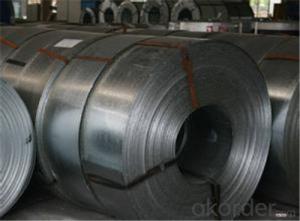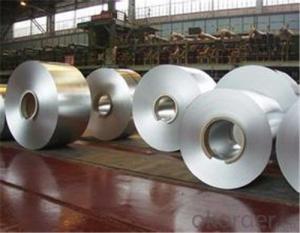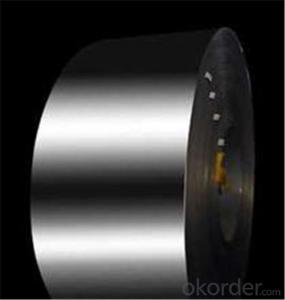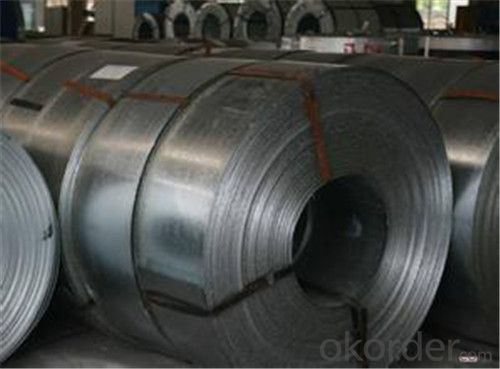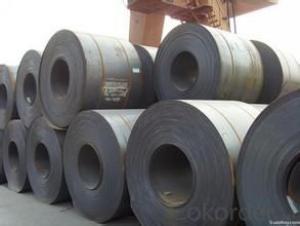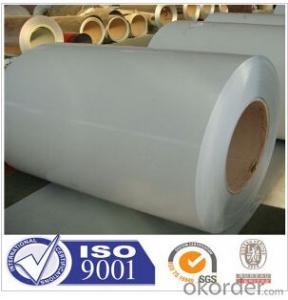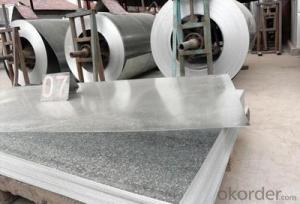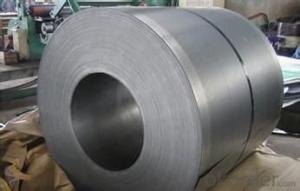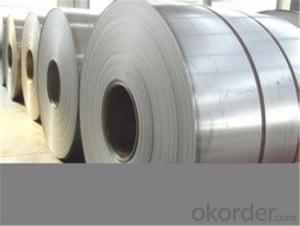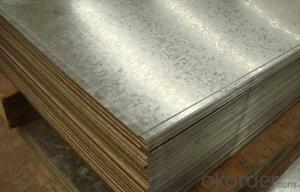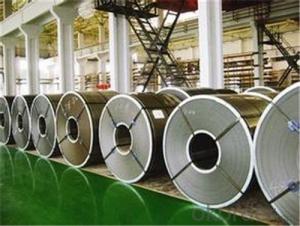Rolled Steel Sheet / Plate in CNBM from China
- Loading Port:
- Tianjin
- Payment Terms:
- TT OR LC
- Min Order Qty:
- 200 m.t.
- Supply Capability:
- 5000000 m.t./month
OKorder Service Pledge
OKorder Financial Service
You Might Also Like
Description:
The raw material of cold rolled steel coil/sheet is high quality hot rolled product, and after pickling, kinds of new technology and new process of global cold rolling production have been applied. Therefore the manufacturing, home appliance, automobile etc.
Specification:
COLD ROLLED STEEL | |
Thicknenss | 0.10mm-4.00mm |
Width | 600mm-2000mm |
Sheets length | 1200-6000mm |
Coil inner diameter | 508-610mm |
Surface treatement | matt finish/bright finish,oiling/dry, bright anneal/black anneal |
Coil weight | 3-5t |
Characteristic:
Quality of the goods could be guaranteed. The finished product has a variety of excellent capabilities, such as continuous rolling, degreasing, annealing, skin pass, slitting and cut to length line etc. Along with it many rocessing capability and smooth, flat surface. It’s widely used in outdoor and interior decoration, furnishing
Details:
We can ensure that stable quality standards are maintained, strictly meeting both market requirements and customers’ expectations. Our products enjoy an excellent reputation and have been exported to Europe, South-America, the Middle-East, Southeast-Asia, Africa and Russia etc.. We sincerely hope to establish good and long-term business relationship with your esteemed company.
Images:
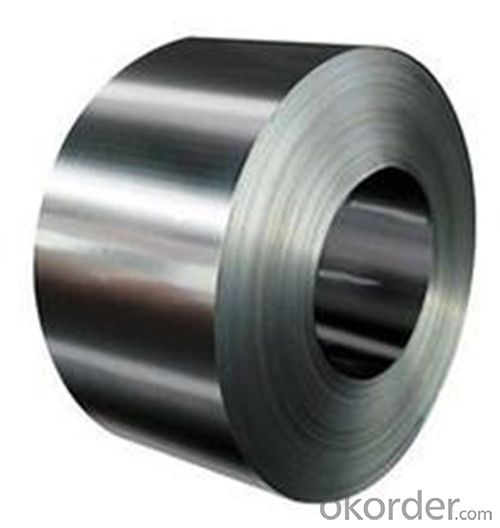
FAQ
1.What's your MOQ?
50MT, it is for one container.
2.Whether your company have QC teams?
Yeah, sure, our QC team is very important, they will keep the quality control for our products.
3. What's your normal delivery time?
Our delivery time about 10-20days for standard sizes, if you have other requirements like hardness and width ,it is about 20-40days. But don't worry ,we also try our best for the
- Q: What are the common defects found in steel coils?
- Some common defects found in steel coils include surface defects like scratches, indentations, and pits, as well as internal defects such as cracks, lamination, and segregation. Other defects can include edge wave, coil breaks, and coil set.
- Q: I'm a Hobbyist and want to Build my own axial-flow jet engine,can I use steel as the Turbine blades instead of Titanium which I can't get easily?? What about the other parts I can use for...?!
- Jet gasoline definitely does get warm sufficient to soften the engines (the cores of that are created from titanium alloy, not steel). in actuality, jet engines could be in particular designed as a fashion to not soften below popular working situations. As for the engines vaporizing it incredibly is extremely not likely. They probable have been pulverized via the impact forces and the debris then melted interior the hearth.
- Q: How do steel coils contribute to the circular economy?
- Steel coils contribute to the circular economy through their recyclability and reusability. The circular economy aims to minimize waste and promote the continuous use of resources, and steel coils align perfectly with this concept. Firstly, steel coils are made from recycled steel, which reduces the need for extracting raw materials and the associated environmental impact. By using recycled steel, we can conserve natural resources and reduce energy consumption during the manufacturing process. This practice helps to lower carbon emissions and decrease the overall ecological footprint. Furthermore, steel coils can be easily recycled at the end of their lifecycle. Steel is one of the most recycled materials globally, with a high recycling rate. When the coils reach the end of their use, they can be collected, processed, and transformed into new steel products, without losing their properties or quality. This closed-loop recycling system ensures that steel resources are continuously utilized, minimizing the need for virgin steel production. Additionally, steel coils support the circular economy by enabling the creation of durable and long-lasting products. Steel is known for its strength and durability, making it ideal for various applications such as construction, automotive, and packaging. By using steel coils, we can produce products that have a longer lifespan, reducing the need for frequent replacements and minimizing waste generation. Moreover, steel coils can be reused multiple times before they are recycled. They can be rewound, reshaped, or repurposed for different applications, extending their lifecycle and reducing the demand for new coils. This reuse aspect of steel coils contributes to resource efficiency and waste reduction. In summary, steel coils play a significant role in the circular economy by being made from recycled steel, being easily recyclable themselves, enabling the creation of durable products, and promoting reuse. Their contribution helps to close the loop in the steel industry, conserves natural resources, reduces waste generation, and minimizes environmental impact.
- Q: Can steel coils be used in high-temperature applications?
- Yes, steel coils can be used in high-temperature applications. Steel is known for its excellent heat resistance and can withstand elevated temperatures without significant loss of strength or deformation.
- Q: How are steel coils used in the manufacturing of automotive accessories?
- Steel coils are used in the manufacturing of automotive accessories as they are processed and shaped into various components such as brackets, frames, and supports. These coils are typically cut, molded, and stamped into specific shapes before being assembled into the final product, adding strength and durability to the accessories.
- Q: How are steel coils inspected for dimensional accuracy during processing?
- Steel coils are inspected for dimensional accuracy during processing through various methods such as measuring tape, calipers, laser scanners, or automated vision systems. These tools are used to measure the length, width, and thickness of the coils to ensure they meet the required specifications and tolerances.
- Q: How are steel coils used in the manufacturing of suspension arms?
- Steel coils are used in the manufacturing of suspension arms as they provide strength and flexibility to absorb shocks and vibrations. These coils, also known as coil springs, are compressed and installed in the suspension system to support the weight of the vehicle and maintain proper ride height. The use of steel coils allows for better handling, stability, and improved overall performance of the suspension arms.
- Q: How are steel coils protected from humidity?
- Steel coils are typically protected from humidity through a process called galvanization, where a layer of zinc is applied to the surface of the steel. This zinc coating acts as a barrier, preventing moisture from coming into contact with the steel and causing corrosion. Additionally, the coils may be stored in a controlled environment with low humidity levels to further protect them.
- Q: What are the best types of steel for swords
- Don't know too much but I know combat grade katanas are made out of folded carbon-steel. Could also look into industrial steel grading systems if you are looking for something to show off at a martial arts tournament or something.
- Q: in broken steel can you to missions and get things like the dog, you previously didnt do/get in fallout 3?
- It's Fallout.... Nobody cares enough to know. URN
Send your message to us
Rolled Steel Sheet / Plate in CNBM from China
- Loading Port:
- Tianjin
- Payment Terms:
- TT OR LC
- Min Order Qty:
- 200 m.t.
- Supply Capability:
- 5000000 m.t./month
OKorder Service Pledge
OKorder Financial Service
Similar products
Hot products
Hot Searches
Related keywords
